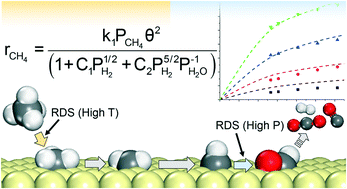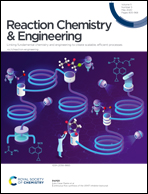Elementary reaction pathway study and a deduced macrokinetic model for the unified understanding of Ni-catalyzed steam methane reforming
Abstract
Ni-Catalyzed steam methane reforming (SMR) is widely used in energy and chemical engineering, but the confusion about vastly different SMR kinetic data has lasted for half a century. Towards solving the puzzle, the intrinsic mechanism of SMR is examined by performing density functional theory computations and transition state theory analyses on 80 elementary reaction steps involved in SMR over Ni(111). A microkinetic model is developed by combining the thermochemical data of the elementary reactions with a continuous stirring tank reactor model. The microkinetic model is used to investigate the reaction pathways, the rate determining steps and the abundances of surface species. Reaction rates predicted by the microkinetic model are in good agreement with the experimental data obtained under very different temperature and pressure conditions. An analytical expression of the SMR rate is derived based on the dominant reaction pathway and the abundances of surface species. The rate equation is verified to accurately reflect the microkinetic modeling. Applying the analytical rate equation yields a coherent explanation of the seemingly incompatible experimental data on the reaction orders of CH4, H2O and H2 and the activation energy of SMR. The rate equation is very useful for the optimization of the operating conditions of SMR.



 Please wait while we load your content...
Please wait while we load your content...